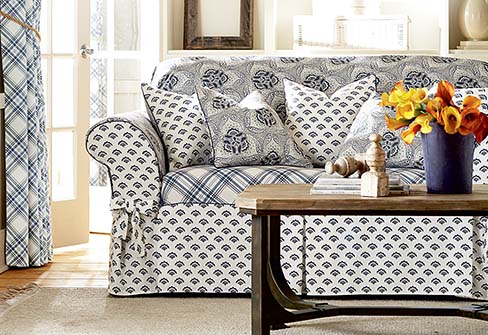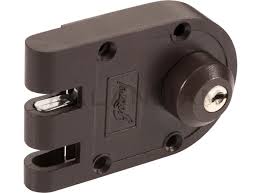Lighting is often overlooked when it comes to home decor, but it plays a crucial role in creating a welcoming and functional space. The right interior lighting can transform the ambiance of a room, enhance its aesthetic appeal, and even impact your mood and well-being. As we approach the darker days of fall and winter, it’s essential to understand the profound effects of lighting on our homes and our lives. In this comprehensive guide, we will explore the psychological and physiological effects of light, the factors to consider in lighting design, and the best lighting options for every room in your house.
Psychological and Physiological Effects of Light on Your Well-being
Scientific research has shown that light has a significant influence on our mood, emotions, and overall well-being. In a study conducted on schoolchildren, it was found that changing the color and intensity of light in a classroom resulted in improved behavior and reduced restlessness. This can be attributed to the impact of light on neurotransmitters in the brain, which regulate our emotions and behavior. Additionally, studies on mammals have shown that light affects the production of melatonin, a hormone that regulates sleep and mood. By understanding the psychological and physiological effects of light, we can harness its power to create a happier and more productive environment in our homes.
Factors to Consider in Lighting Design
When designing the lighting for your home, it’s important to consider several factors to ensure that you achieve the desired effect. These factors include the size and space of the room, the age and preferences of the occupants, the ceiling height and shape, the color of the walls and furniture, the existing lights and electrical setups, the points of interest and highlight areas, the traffic patterns, the shadows and reflections, the integration of natural daylight, the surface characteristics, the color appearance, the lighting controls and distribution, the source, task, and eye geometry, the economics and energy efficiency, the spatial perceptions, the level of illumination, and the electrical codes, documentation, and specifications. By taking these factors into account, you can create a lighting design that is not only aesthetically pleasing but also functional and tailored to your specific needs.
Best Lighting Options for Every Different Rooms
Each room in your home serves a different purpose, and it requires a specific lighting setup to fulfill its function effectively. Let’s explore the best lighting options for some of the most commonly used rooms in a house.
1. Kitchen Lighting
The kitchen is a multifunctional space that requires various types of lighting to ensure optimal functionality. For general or ambient lighting, consider installing ceiling fixtures or recessed can lights that evenly distribute light throughout the room. Task lighting is essential in the kitchen, especially in work areas such as the countertops and the kitchen island. Pendant lights are a popular choice for lighting over an island, while undercabinet lights can provide focused illumination for food preparation areas. To add a touch of elegance and functionality, incorporate accent lights such as tape lights in the toe-kick area or strip lights and downlights to showcase dishes on open shelves or glass-front cabinets. When selecting lightbulbs for your kitchen, keep in mind that task areas require more intense illumination, while general areas can have slightly lower light levels.
2. Dining Room Lighting
The dining room is a space for gathering, conversation, and socializing, making good overall lighting essential. Ceiling fixtures such as flush-mount and recessed can lights work well to provide general illumination in dining rooms. To add a touch of elegance and create a focal point, consider installing a chandelier that not only serves as a decorative element but also provides ample general lighting. When installing a chandelier, ensure that it hangs at the appropriate height above the table, generally around 33 inches for an 8-foot ceiling, with an additional 3 inches for every foot above 8 feet. To determine the right level of illumination, aim for about 30-40 lumens per square foot in the dining room.
3. Living Room Lighting
Living rooms serve multiple purposes, from casual entertaining to cozy movie nights, and the lighting should be adaptable to these activities. Flexible track lighting is an excellent choice for living areas as it allows you to adjust the direction and intensity of the light based on your needs. Pendants can create a warm and inviting ambiance when the TV is off, while dimmable sconces, track lights, and uplights on molding can provide a movie-theater feel without causing shadows or glare when the TV is on. Aim for about 10-20 lumens per square foot to achieve the desired level of illumination in your living room.
4. Bathroom Lighting
In the bathroom, lighting is essential for both functionality and aesthetics. Avoid lights that cast shadows or create glare by placing fixtures, such as pendants or sconces, on each side of mirrors. This provides balanced lighting for grooming tasks. Consider adjustable sconces for shared bathrooms, as they can accommodate specific lighting needs. Bright light is best for bathrooms, so aim for about 70-80 lumens per square foot to ensure ample illumination.
5. Hallway Lighting
Hallways serve as transition areas between rooms and don’t require particularly bright lighting. Flush-mount ceiling fixtures or wall sconces can provide inconspicuous light, ensuring safe movement through the space. Aim for about 5-10 lumens per square foot in hallways to achieve a sufficient level of illumination.
Consulting a Professional for Lighting Design
While these guidelines can help you get started with your home lighting design, it’s crucial to consult a professional for the best results. A lighting professional can provide expert advice on choosing the right fixtures, creating a balanced lighting scheme, and ensuring compliance with electrical codes and specifications. They will take into account your specific needs, the layout of your space, and your desired aesthetic to create a lighting design that is both functional and visually appealing. Additionally, professionals have the technical expertise to handle any electrical installations or modifications safely.
Conclusion
Lighting is a vital aspect of home decor that should not be underestimated. By understanding the psychological and physiological effects of light and considering various factors in lighting design, you can create a space that is not only visually stunning but also enhances your mood, productivity, and overall well-being. Whether you’re designing the lighting for your kitchen, dining room, living room, bathroom, or hallway, the right lighting choices can transform your space into a welcoming and functional environment. Remember to consult a professional for personalized advice and assistance in creating the perfect lighting design for your home. Let the power of light illuminate your space and uplift your spirits.



